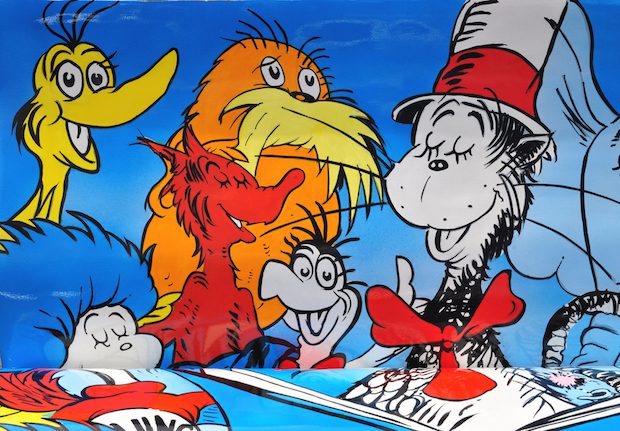Story Time With Progressives

Did you know that Dr. Seuss’s books are secretly racist? Prof. Philip Nel has been reading between the lines, and brings the news to woke parents. Excerpts:
Fattal: You argue that there is an imperative to keep reading these problematic children’s books. What would you say to those who ask why we wouldn’t just stop reading them?
There is actually a very strong case for not reading them. Racist books inflict real damage on children of all races. So there’s a very strong argument to be made for that, and I don’t want to diminish that at all. The reason that I am not making that argument is that I don’t think that ignoring the symptom cures the disease. People need to learn that this is one place that racism comes from. They need to learn it in context. You definitely shouldn’t only teach racist children’s books. There’s a wealth of really thoughtful, historically oriented and carefully written books that can help us think about colonialism or racism or sexism more thoughtfully, and you would only want to teach these books in that context.
I think that to erase the crime does not erase its effects. It’s still there and we still have to deal with it, and in some ways, the unvarnished awfulness of it, as painful as it is to look at, can be a way to do that, and can be a way to help make it visible elsewhere. If you don’t know the history of minstrelsy, then you don’t notice it in Mickey Mouse or Bugs Bunny or the Cat in the Hat. It’s knowing the history that helps you say, “this pop culture that I enjoy is way more racialized than I was aware of, and that’s troubling.”
Fattal: You talk about the need for a parent or teacher to facilitate discussions on the racist elements of children’s books with students who may be too young to do this kind of critical reading on their own. What might that conversation look like?
Nel: It will obviously depend on the individual child, the age of the child, et cetera, but the best way is to ask questions. When you notice something in a book, ask questions about it. Would you be happy working in a factory and being imprisoned there? What do you make of presenting the Oompa Loompas as happy? What are some of the assumptions of this work? Why is it presenting this character in this way? Why are all the characters in this book white? What do you make of that? You want children to think about power in the text, whose interests are represented in the text, who is not being heard in the text. And you can focus those on the specific work.
I think with children you have to have a conversation—you have to ask them critical questions, and you have to invite them to ask critical questions about the book that they are reading. It’s a conversation that’s going to be uncomfortable, a conversation in which you may have to admit you don’t know all the answers. It’s not an easy conversation to have, by any means. One of the things that I do when I teach [college students] in class is I acknowledge my own uncomfortableness. Because sometimes students don’t want to talk about this. And so I acknowledge why they’re uncomfortable and that I’m uncomfortable, too, and that it’s okay to be uncomfortable. I think that’s the kind of tone to set when you have these conversations: that this is going to be uncomfortable.
Read the whole thing. “Mom, would you mind reading our bedtime story tonight? It’s no fun when Dad does it.”
So, readers, let’s have some fun here. What are some questions you could ask your child at bedtime to get them good and woke on familiar children’s stories? Not just Dr. Seuss books, but other classics. Is there a feminist reading of Ramona the Pest? Does Goodnight Moon tell us anything about intersectionality? Come on, let’s hear it.
Subscribe for as little as $5/mo to start commenting on Rod’s blog.